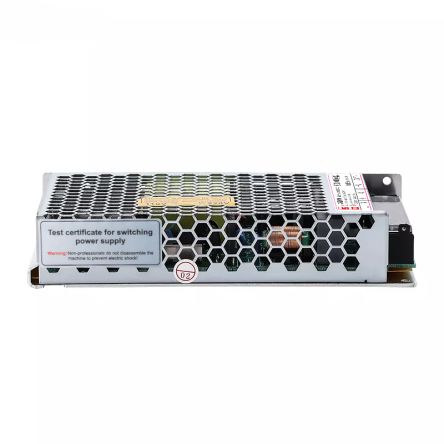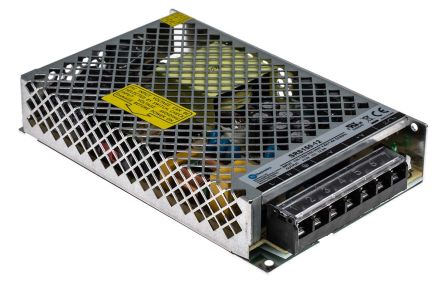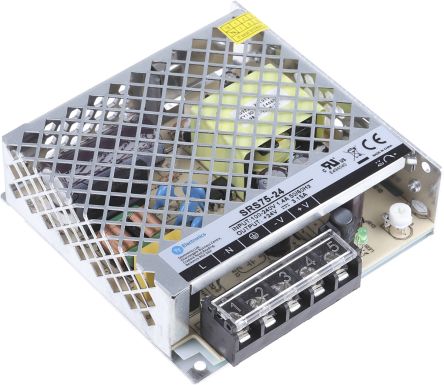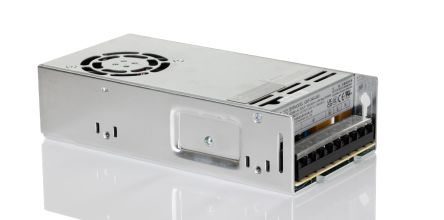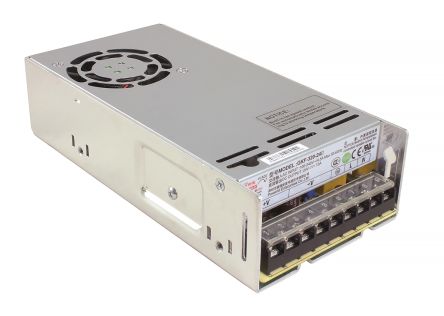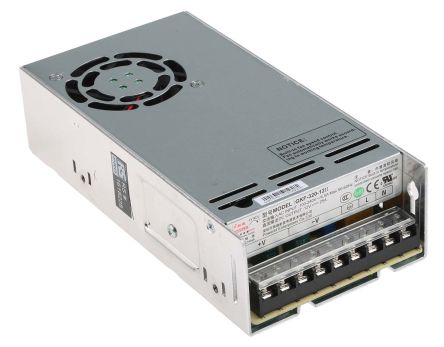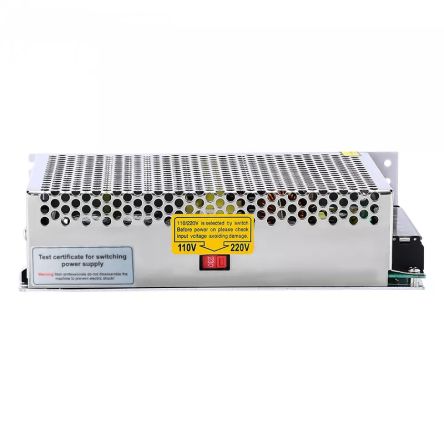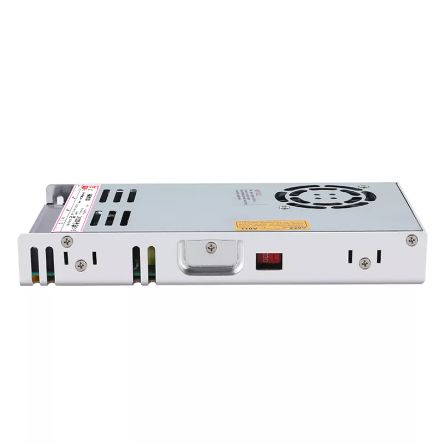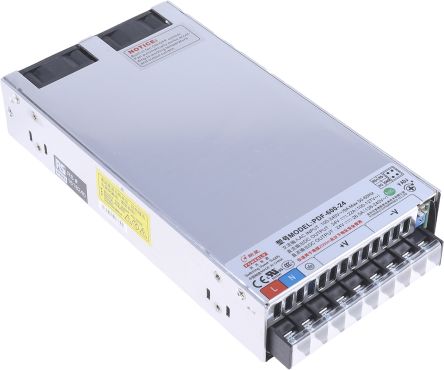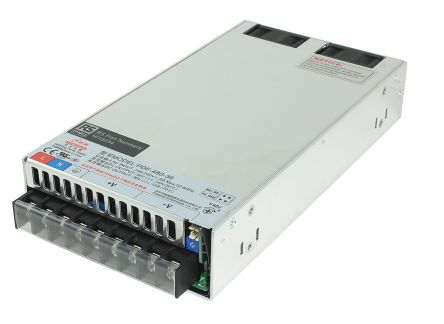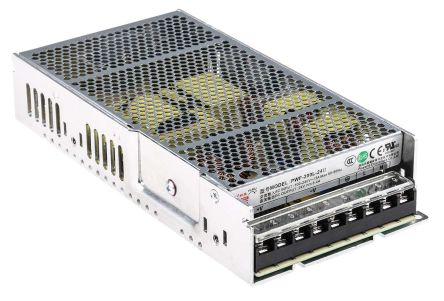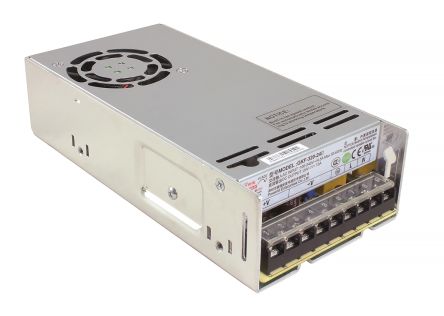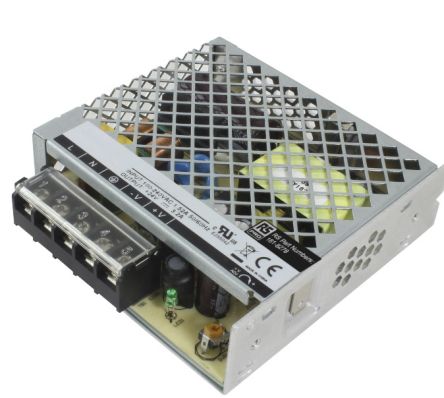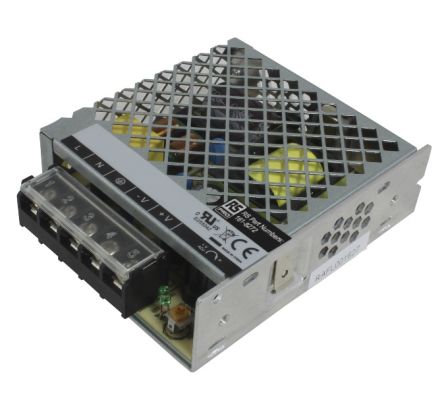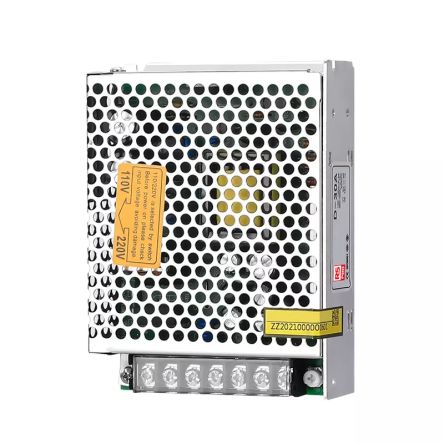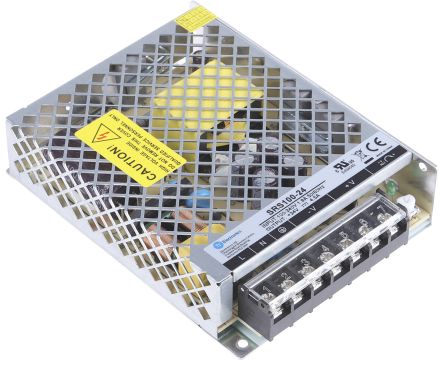- Automation & Control Gear
- Cables & Wires
- Enclosures & Server Racks
- Fuses & Circuit Breakers
- HVAC, Fans & Thermal Management
- Lighting
- Relays & Signal Conditioning
- Switches
- Batteries & Chargers
- Connectors
- Displays & Optoelectronics
- ESD Control, Cleanroom & PCB Prototyping
- Passive Components
- Power Supplies & Transformers
- Raspberry Pi, Arduino, ROCK, STEM Education & Development Tools
- Semiconductors
Switching Power Supplies
Switching power supplies, also known as switch mode power supply (SMPS), are electronic devices that provide efficient and regulated power conversion from one voltage level to another. They are widely used in a variety of electronic devices, including computers, smartphones, televisions, industrial equipment, and more. Switching power supplies offer several advantages over traditional linear power supplies, such as higher efficiency, smaller size, and lighter weight.
How Does a Switching Power Supply Work?
Switching power supplies operate using Pulse Width Modulation (PWM), where an electronic switch (usually a transistor) rapidly toggles on and off at high frequencies, typically ranging from tens of kilohertz to several megahertz. This switching generates a square wave-like signal, which is then fed through an inductor and/or transformer. The duty cycle of this switch — the proportion of time it is 'on' compared to 'off' — is carefully controlled to adjust the output voltage to the desired level. This method not only enhances efficiency but also allows for smaller and lighter components, making SMPS ideal for various applications that require compact and energy-efficient power solutions.
Input Voltage Range
Switching power supplies are designed to accommodate a wide range of input voltages, typically from as low as 85 V to as high as 265 V AC, making them versatile for global use. Common configurations include single-phase for residential and light commercial applications and three-phase for heavy-duty industrial environments, ensuring optimal performance regardless of location.
Overcurrent Protection
To safeguard both the power supply and the connected devices, SMPS are equipped with overcurrent protection. This safety feature helps prevent damage by interrupting the power supply when the current exceeds safe operational levels. For instance, in high-demand industrial settings, this feature is crucial to maintaining system integrity and preventing costly downtime.
Overvoltage Protection
Overvoltage protection in switching power supplies is crucial for preventing potential damage to electronic components. By automatically shutting down the output when the voltage exceeds a predetermined threshold, these devices ensure the longevity and reliability of both the power supply and the connected equipment.
Thermal Protection
Thermal protection in SMPS is designed to counteract excessive heat buildup, which can be detrimental to the power supply’s performance and longevity. This feature typically involves temperature sensors that trigger a shutdown or power reduction when critical temperatures are reached, thus preserving the unit's integrity and preventing heat-related failures.
Output Voltage Adjustment
Many switching power supplies feature adjustable output voltage, enabling precise control to match the power requirements of specific devices. This adjustability is particularly beneficial in applications like test and measurement, where equipment may require finely tuned voltage levels to operate correctly.
Where Are Switching Power Supplies Used?
Switching power supplies (SMPS) are used in a wide range of applications due to their efficiency, compact size, and versatility. Here’s a closer look at the common areas where SMPS are employed:
- Consumer Electronics: Utilised in devices like smartphones, computers, and TVs, where efficiency and space-saving are crucial.
- Telecommunications: Essential for powering infrastructure that requires reliable and continuous operation.
- Industrial Applications:
- Automated Production Lines: SMPS regulate power in machinery that performs precision tasks, ensuring operational consistency and safety.
- Process Control Systems: Used in systems that monitor and control industrial processes, providing stable power that enhances system reliability and accuracy.
- Heavy Machinery: Supports large-scale industrial equipment with robust power supply needs, adapting to fluctuating power demands without compromising performance.
- Power Generators and Distributors: Integral in managing power supply and distribution with high efficiency, especially in settings with variable power loads.
- Automotive: Powers advanced electronics in vehicles, including electric and hybrid cars, where efficiency and reliability are key.
- Medical Equipment: Critical in hospitals and clinics for devices that require precise and reliable power, ensuring patient safety and device functionality.
- Aerospace and Defence: Employed in systems where power efficiency and reliability are vital under extreme conditions.
- Renewable Energy: Enhances energy efficiency in systems like solar panels and wind turbines, optimising power conversion and usage.
- Home Appliances: Found in modern appliances that prioritise energy efficiency and compact design.
- LED Lighting: Drives LED solutions by providing stable and efficient power, crucial for longevity and performance.
- Networking Equipment: Supports the backbone of IT infrastructure by powering servers and networking devices reliably.
- Data Centres: Essential for maintaining the continuous operation of data centres with high power reliability and efficiency needs.
- Gaming and Entertainment: Powers gaming consoles and entertainment systems, ensuring they perform optimally during extended use.
Is the Switch Mode Power Supply AC or DC?
A switching mode power supply is designed to convert one form of electrical energy into another. In most cases, the input to an SMPS is AC (alternating current), but the output is typically DC (direct current). The switch mode power supply performs the necessary conversions to ensure that the output voltage is stable, efficient, and suitable for powering electronic devices that typically require DC power.
Buying Switching Power Supplies: Ordering & Delivery Information for Australia
RS offers prompt, reliable delivery across Australia on a vast array of products, including switching power supplies. Whether you need power converters or power relay switches from industry-leading brands like RS PRO, Festo, Mean Well, XP Power, Carlo Gavazzi, TRACOPOWER, Cosel, and Cotek, our delivery services are designed to meet your needs efficiently. For more details on our delivery options and fees, please visit our Delivery Information page.
Popular Searches
Related links
- TDK-Lambda Embedded Switch Mode Power Supply SMPS 24V dc 1 Output...
- RS PRO Switching Power Supply 12.5A 1 Output 85 → 132 V ac Input Voltage
- SMPS Transformers
- RS PRO Embedded Switch Mode Power Supply (SMPS) 1.4A Dual Output,...
- RS PRO Embedded Switch Mode Power Supply (SMPS) 1A Dual Output, 85...
- RS PRO Embedded Switch Mode Power Supply (SMPS) 1A Dual Output, 85...
- Cosel Embedded Switch Mode Power Supply (SMPS) 48V dc 624W 120 →...
- Vox Power Embedded Switch Mode Power Supply SMPS 5V dc 25W, Dual Output
